How do you “review” a cult bike? A bike which has forum faithful frothing at the mouth about the virtues of the V4? A bike with decades of history that Honda has tried to re-invent and re-introduce a couple of times? That’s my problem with writing this VFR800 8th gen review — it’s almost impossible to satisfy everyone. Because ultimately, I sold it, and not every aspect of my VFR800 review is glowing.
So this is as balanced a review of my VFR800 as possible. I’m not you, you’re not me, but maybe we share some things in common — let’s see if my view helps.
Early in 2021, I was looking for a commuter bike.
I knew I’d have a 40-50km commute most days of the week for the terms of a 6-month project I had — mostly freeways, a bit of traffic, some sweepers, and a few nice entry and exit ramps.
… But what’s a “commuter” bike? You can commute on anything. I’ve seen people “commute” in supercars and on superbikes. I suppose it’s different for anyone, but to sum it up neatly… a commuter motorcycle is a bike you don’t mind putting miles on, and on which you can still have fun (it’s a motorcycle, after all). So on one extreme, don’t commute on your showroom Ducati 916 with zero miles on it, but on the other hand, you don’t have to be on a Honda CB500 (not that there’s anything wrong with that, though).
After considering a few options that could work for me, I ended up with a Honda VFR800 8th gen. (See my guide to the Honda VFR generations as to why this is commonly called an 8th gen).
My choices were slim. This was Australia, during a year of supply shortage. Used bikes were more expensive than usual. New bikes were scarce, especially in the ideal colours.
And if I wanted a commuter bike with a bit of bark in it, my choices were slimmer. The two things don’t go hand in hand. Commuters are reliable, predictable, and versatile. A fun sport bike is loud, hot, and impractical. How do you combine those two?
Well, you can’t exactly… but there are a few sweet nexus points. The Honda VFR800 is one of them.
The VFR800 range has reached cult status — by which I mean the fans are adulatory, more so than the spec sheets would imply. So there was a lot I wanted to know about the VFR800, including
- Is the VFR800 truly a “do it all” bike?
- Is the VFR800 still exciting, or sporty?
- Just how comfortable is the VFR800?
- Would the VFR800’s V4 engine give me that “berserk” feeling I’m used to from exciting motorcycles?
Here’s what I found out.
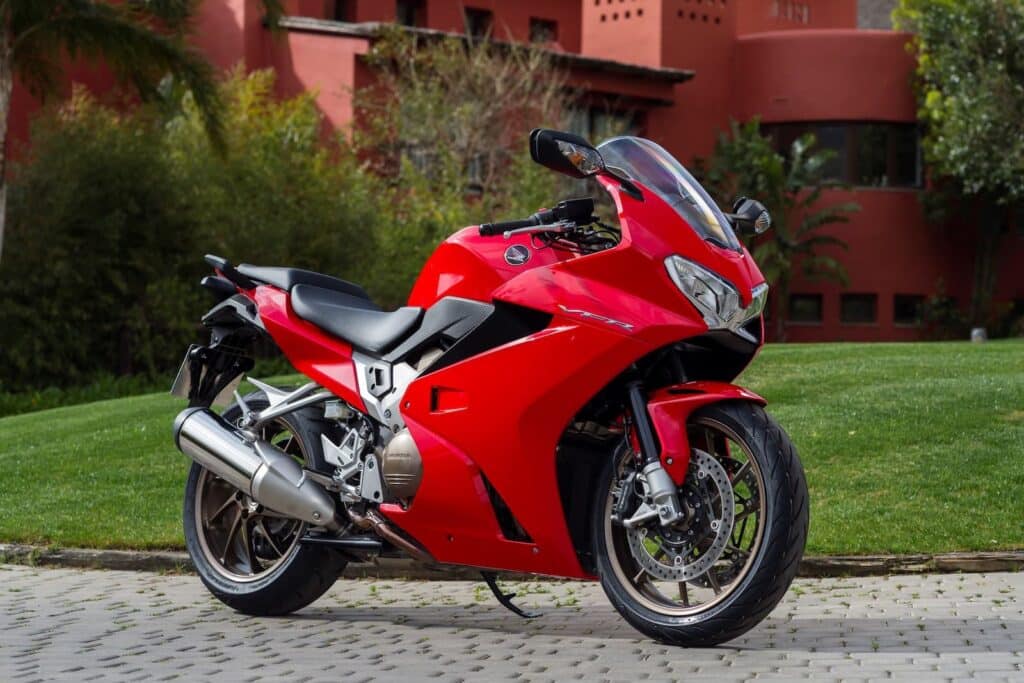
Editor’s note: I ended up selling my VFR800 after three months. I enjoyed it, but it didn’t light my fire.
A lot of people will tell me that if I want to go fast, ride hard, or get laughing-in-my-helmet thrills, then maybe the 8th gen VFR800 Deluxe isn’t the bike for me. Or that I’m missing the point, or that maybe I should “upgrade the rider”. All of that is valid.
The thing is, when you strip back any motorcycle purchase… a lot of what makes you love a bike is an ephemeral, entirely subjective feeling. Sometimes the heart knows, and sometimes it doesn’t and you give it a try. With so many bombastic reviews spewing forth adulating epithets about the virtues of the VFR, I feel I owe it to the internet to say — cool machine, but it’s not for everyone. In the end, it wasn’t for me.
But I’ll try to share why it might be for you.
Are you obsessed with motorcycles?
Well, I am. That’s why I created this site — as an outlet. I love learning and sharing what others might find useful. If you like what you read here, and you’re a fraction as obsessed as I am, you might like to know when I’ve published more. (Check the latest for an idea of what you’ll see.)
Quick specs of the Honda VFR800 8th Gen
You want specs, go Google them. You can’t really ride a spec sheet. But that said, specs DO let you understand why a motorcycle performs in a certain way, and that’s why I look at a few key figures.
| Part | VFR800 8th gen spec |
|---|---|
| Engine | 782cc liquid-cooled 16-valve DOHC 90-degree V4 with VTEC valves |
| Power (claimed) | 78 kW (105 hp) @ 10,250 rpm, “not too shabby” |
| Torque | 75 Nm (55 lb-ft) @ 8,500 rpm |
| Redline | 12,000, but with a natural shift around 10K. |
| Wet weight | 240 kg / 529 lb |
| Front suspension | Showa cartridge forks, conventional (non-USD), adjustable for preload and rebound damping. |
| Rear suspension | Single shock with remote preload canister, also adjustable for rebound damping. |
| Front brakes | Tokico dual radial-mounted four-piston calipers with full-floating 310mm discs |
| Rear brakes | Single 256mm disc |
| Drivetrain | Six-speed transmission, chain drive, single-sided swing-arm |
| Price | US MSRP: $8,499. Australia: $14,499 ride away. (Price these days: about 1/2 to 2/3 of that) |
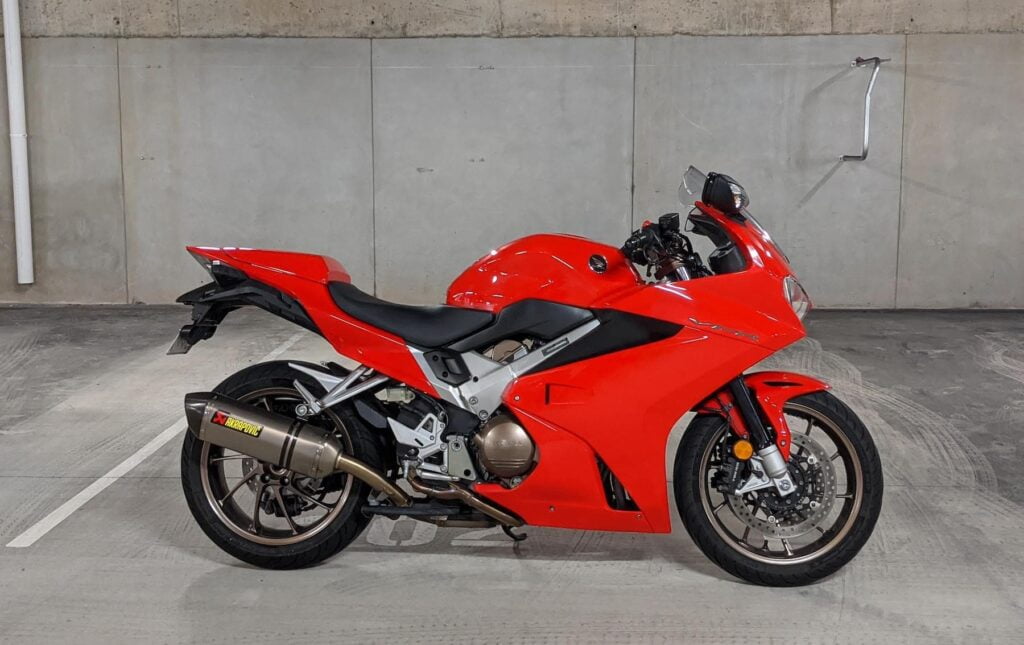
The Appeal of the VFR — Why buy a VFR800?
So, why even try a VFR? Because there’s so much that it does right.
Firstly, that engine. It’s a charmer. It’s a V4 with a lot of character for a reliable donk with a steady purr. It has a lot more burble than that of the Hornet 919, another fast (but not insane) motorcycle from Honda that I really liked.
I always wanted to ride a motorcycle with a V4 engine without having 200hp on tap to freak me out, and the VFR800 seemed like a great contender. I often think 100hp is a good sweet spot for having fun without killing yourself.
That said, the V4 in the VFR800 doesn’t produce an angry, edgy rasp like a Ducati V-twin or even the crossplane crankshaft of a Yamaha R1. It’s ultimately gentle, but with a bit of an edge to keep things interesting.
Secondly, the VFR800 8th gen (specifically) has a LOT of features that make it just great value. In the “Deluxe” version that most markets get as the only option, you get heated grips, self-cancelling turn signals, a beautiful dash, a centre stand (makes chain maintenance so much easier), ABS, traction control… and at a great price.
You can even get a full set of panniers for the 2014+ VFR, with keys that you can customise to match the ignition.
You can get panniers for earlier generations. But apart from the VFR1200F (the debatable “7th gen”, which is a very different motorcycle), you can’t get factory, traction control, heated grips, or that sweet dash. You could get ABS from the 6th gen, optional at first, and later standard.
Thirdly, the VFR is dead easy to ride. For some reason, it is easy to throw around. Maybe it carries its (considerable) weight low. I found myself lane splitting with ease like I was on a much smaller bike.
Finally, the VFR just looks really nice. The paint on mine was deep and red and screamed “buy me! buy me!”. It has beautiful bronze wheels with a single sided swing-arm. I even like the way it looks front the front — unlike many older bikes, both front lights illuminate, so well-meaning strangers don’t tell me a headlight is out.
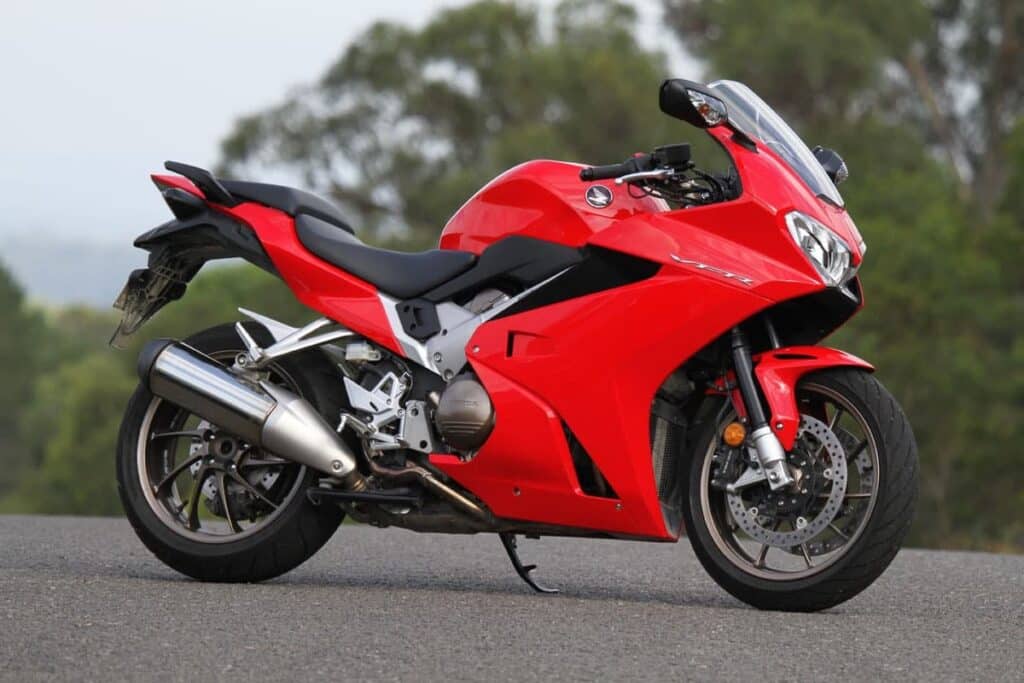
Even the dash is comforting to me — just the right amount of info, and I can turn the bloody engine temperature gauge off (it’s always fine, but it is so distracting as I worry when it sometimes goes to around 100 Celsius).
Variants of the Honda VFR800 8th gen (Standard vs Deluxe)
In the US, there are two main variants of the VFR800 8th gen, the standard non-deluxe (VFR800F) and the deluxe (VFR800FE).
There are a number of features in the Deluxe version of the Honda VFR800 8th gen that make it a no-brainer.
- Center stand
- Rebound adjustable front suspension
- Traction control and heated grips
- Front wheel ABS ring
Without hesitation, I’d recommend the VFR800 Deluxe. Here are the main differences with the Deluxe version of the VFR800:
- Adjustable front suspension for preload and damping (standard has non-adjustable suspension)
- Self-cancelling turn signals
- ABS and Traction control
- Heated grips
- Center stand
I’ve ridden both, and I liked both similarly. Looking through the above things, you can obviously do without all the add-ons of the Deluxe version — many people are happy with their standard Interceptor.
The number one benefit of the Deluxe version is the suspension. Non-adjustable suspension is fine if you are in a sweet spot of rider weights (75-85kg or around 185 lb), but it becomes more important if you go much out of that.
Many people on standard VFRs, if they’re not happy, start looking into how to upgrade their suspension. When buying new, common advice if buying the standard VFR was to spend the money you saved on suspension mods.
The second benefit is ABS. I am a big advocate of ABS for commuter motorcycles, and the VFR800 8th gen was primarily my commuter.
Aside from that, heated grips and a center stand were nice conveniences. When lubing the chain (which you should do after riding in the rain… it just happens!) in a tiny car space, it’s nice not to have to go and get my stand out.
The self-cancelling turn signals are nice. But to be honest I tried not to rely on them as most motorcycles (including my other one) don’t have that feature.
Finally, the traction control was… usually fine, but to be honest, annoying at times. I noticed it sometimes (e.g. launching on a dirt road), which bugged me, so occasionally I turned it off when going on a mildly spirited ride, to ensure I wouldn’t get bogged down.
But should you sell your VFR800 standard for a Deluxe? Probably not! This was a question often asked in the forums. Generally, people think you can live without ABS, and spend the money you save on suspension improvements above and beyond those of the Deluxe.
(Personally I think ABS on a commuter is a must-have. You don’t need it until you do, and then you’re really grateful. Like it saved me from a stupid parking lot accident once when I was being a little cavalier. But that’s just one more opinion.)
Riding the Honda VFR800
It’s quite hard to describe what it’s like to ride any motorcycle. Piecing through reviews, everyone wants to say every motorcycle is amazing at something — because everyone likes reading a positive review. Positive reviews attract fans, who then share them, giving each other confirmation bias.
But what is the VFR800 really like to ride, from someone with no agenda and who has ridden a lot of bikes? That’s what I’ll try to share, as well as to dispel any myths.
In summary, riding the VFR is like riding a fast enough, reasonably comfortable sportbike. It’s definitely faster than you need for a commuter, but without being so powerful that it’s champing at the bit and egging you to go on, way past speed limits. It corners easily, and holds itself with grace through everyday curves — it’s hard to scrape it in normal everyday riding (well, at least on my route), and that’s getting past angles of 35 degrees on turnoffs and roundabouts.
Firstly, the VFR800 is not a sport bike. It’s fast enough. For someone who has ridden bikes spanning 10-200 hp and enjoyed them all in different ways, I equate riding the VFR with any number of middleweight commuters — the Kawasaki Ninja 650 (full power), Yamaha Tracer 900 GT, or Honda Hornet CB900 919, just to name a few.
“Blasphemy!” cry the VFR800 faithful. Many people take VFRs to the track, after all, and will be quick to point out that it has its roots in racing, and they know a person (or are that person) who can make mincemeat of more powerful sport bikes because it’s more about the rider than the bike.
That’s all true. But everything’s relative. I guess there are a few definitions of fast — lap times, acceleration times, and just “feeling” fast. By all three of these metrics, a VFR800 will lose to a 600cc sportbike, particularly the last definition. But the degree of importance of each of those is entirely up to you.
Launching the VFR800 is fun. Being a commuter or sport tourer, it doesn’t rev to infinity and isn’t geared for top speed. So you can give it full throttle and shift into second at around 80 km/h / 50 mph quite naturally, or push it forward to 100 km/h / 60 mph where you really need to shift.
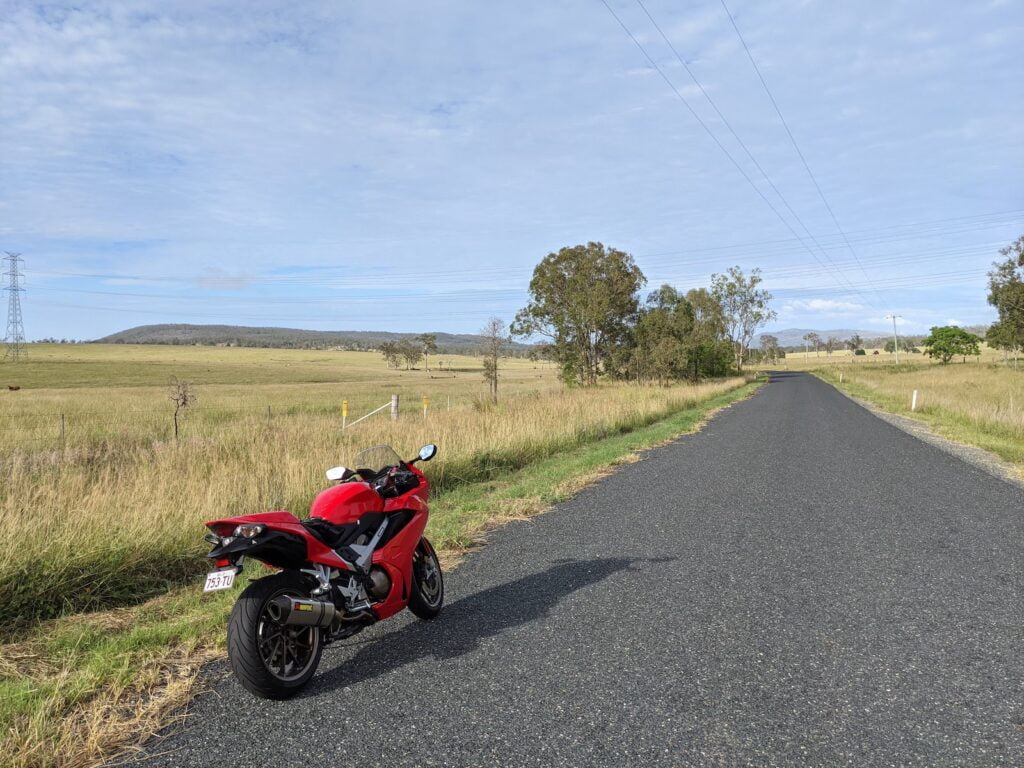
By the time you’re at 65 km/h / 40 mph, you’re also at the part of the rev range where VTEC actuates. This is where things get really rowdy. VTEC means your bike is now a four-valve V4 sportbike, not a two-valve commuter. You’re rewarded with a raspier exhaust note and a sudden surge of power.
Is VTEC sudden? On some earlier models of the VFR800 (mostly 2002-2005), riders and reviewers complained that the VTEC valve actuation was too sudden. I don’t find this a problem with the 2014+ 8th gen. Sure, if you’re going around a corner and accidentally let the throttle hesitate around the VTEC actuation point, it feels weird. But it’s not unsettling. Dare I say it — it’s “character”.
Because the VFR800 is kind of a sport bike, many think of it as one. It is definitely sportier than a Ninja 650 or Versys 650 (both definitely in the “commuter” category of motorcycles).
But the Honda VFR800 is not as sporty as more intentionally sport-focused motorcycles. My over ten-years-older CBR600F4i has a lot more fire in the belly and corners far more easily. It even had superior suspension — in fact, the F4i’s forks are a sometimes upgrade for some generations of the VFR (not often for the 8th gen). And the F4i, like other sportbikes in the 600cc class, revs higher, and is more engaging in the top end of the powerband.
The VFR800 does corner well. I found it quite easy to tuck and lean into curves. The angle of the handlebars is not so wide that you’d be fooled into thinking it was a naked bike, but not so shallow as to make you think you’re on a supersport.
Pushing on one handlebar on the VFR meant I’d dive into an on- or off-ramp and hold my corner as I wound on the throttle. Here’s one of its virtues as a mid-powered commuter — I never really felt scared of breaking traction. (Not something I can say about the motorcycle that replaced it.)
The times when I most appreciated the VFR800 were the times when I didn’t actually want the ultimate motorcycle. Like when it was dark and cold and I was riding home in the rain. At times like that, having a basket-load of torque at the back wheel (and no traction control) can make a commute nerve-wracking. Firing up the VFR and having the beautiful dash light up, and the road well illuminated in front of me, was positively comforting.

Riding Position of the VFR800 — Is it Comfortable?
The VFR800 is definitely not an upright commuter (like the VFR800X), but nor is it a sport bike on which your wrist is roughly the same height as the seat of your pants. In fact, my favourite thing about the VFR800 is the position — it’s not so upright that I think “this is a motorcycle for when I have back problems”, nor is it so far forward that I think I’m mooning the car behind me.
Sport touring is one of my favourite categories of motorcycle. It’s under-appreciated. Everyone these days seems to choose between adventure tourers, sportbikes, or cruisers… but the sport tourer — bikes like the VFR800, the Ninja 1000, the Suzuki Hayabusa (kinda), and the Ducati Supersport — are such a nice balance of comfort and excitement that I just wonder why they’re overlooked.
In standard riding position, with the seat at its lowest position (it has two positions), the VFR800 is acceptably comfortable if you like the sport-touring position. If you keep your arms straight, you’ll end up putting pressure on your wrists, so you really should grip the tank. Unfortunately — the tank is quite slippery and doesn’t lend itself to gripping without some kind of hugger material added.
Committing to riding a sports tourer, I even installed factory bar risers. These are colour-matched plates that sit under where the handlebars bolt on and give you about an inch more elevation. The difference is shockingly good. Suddenly I was in a position where I thought “I could ride this for days and not get tired OR bored).
I’ve ridden a number of sport bikes as well as adventure sport tourers (like the Tracer 900). Which bike is most comfortable for you depends on so much, like how strong your core is, how long your legs, torso, and arms are, and how long you want to ride for. For my particular balance, the VFR800 was perfect.
Alternatives to the VFR800
Every motorcycle is an alternative to the VFR800! But I want to address a few of the common “Should I get X vs a Y” questions, particularly for motorcycles I’ve owned and ridden.
The VFR800 is kind of a sport tourer, and kind of a commuter. I wouldn’t call it a sportbike unless you use that term to include slower-paced machines.
Here are what I believe are the main contenders for the VFR800, and advantages and disadvantages of each.
| Motorcycle | Why it’s similar to the VFR800 | Pros and cons |
|---|---|---|
| Kawasaki Ninja 650 | * Modesly powered, but not “slow” * Extremely reliable engine — you’ll crash it before it dies * Popular choice of commuter * Comfortable enough on which to tour. | ✓ Easier to maintain (just one engine head!) ✓ More economical to buy and own ✓ MUCH lighter (~191 kg vs 240 kg) X Less powerful, less exciting engine (50 kW/67 hp, 180-degree parallel twin) X Less nice to look at (though not bad!) X Fewer factory features/options like luggage, traction control, heated grips |
| Kawasaki Ninja 1000 | * Sport tourer with options like factory luggae * Great engine, fast and torquey, derived from the K5 GSX-R1000 | ✓ Much more powerful — around 100 kW vs 75kW at the crank ✓ More upright/comfortable (could be a pro or a con) ✓ Still made in 2021 with features like cruise control and a quickshifter ✓ Slightly Lighter (228kg wet) ~ Can be too powerful for some ~ Have to add grip heaters |
| Yamaha Tracer 900/Tracer 9 | * A practical version of the MT-09 | ✓ More powerful (86 kW / 115 hp) ✓ Much lighter (210 kg/ 462lb)— overall, a faster bike ✓ Comes standard with luggage! ~ More comfortable with the VFR; but a less “exciting” position ✓ Later models (more expensive) have cruise control ~ Not as aesthetically nice as a VFR (but still “passable” |
| Ducati Supersport | * A less extreme Panigale, using the 937cc V-twin * Sporty, but much less powerful, and more comfortable | ✓ It’s a Ducati — sometimes the heart knows ✓ Beautiful to look at and with a wonderful sound, even stock ~ Definitely a lot sportier than a VFR800, encourages aggressive riding X Expensive to buy and to own (though service prices will be similar) X No standard features (e.g. luggage, grip heaters) other than ABS |
I did consider these three alternatives when picking up the VFR.
The thing I really considered about the VFR800 compared to all alternatives is that Honda no longer makes the VFR800. So if I wanted to ride one, that was my chance, and I took it.
Otherwise, the Tracer 900 is a pretty great bike. The triple does have some character, though it didn’t in stock form when I rode one for a couple of days.
The VFR800 Hype & the Engine
One reason I wanted to try the VFR so badly is the hype about this motorcycle.
People are raving fans of the VFR. Many owners have owned multiple generations of the bike. I just wanted to know: Why? What is it about this machine?
The two most popular forums for the VFR800 are VFRWorld and VFRDiscussion. I learned a lot from browsing each one.
There are also a few popular Facebook groups, but you can find those yourself. Like most Facebook groups I’d treat them with caution — there are lots of crazy people out there.
Read those and you’ll get a sense for the good as well as the bad (though mostly positive — these are fans!) of owning the VFR.
But what about the VFR800’s ENGINE?
The engine is a much-fabled part of VFR ownership. It’s quite a special motor — one of the few V4s in production in the last decade, and one of the few that wasn’t somewhat berserk (looking at you, Ducati and Aprilia), or very sedate, in an upright sports tourer (Honda ST1300) or a cruiser (like the CTX1300).
So in that sense, it’s quite special to have the chance to ride a V4 motor. It has a unique character and it has earned its place in history.
That said… The 8th gen’s motor seems to lack the fire of earlier models. When I hear a 5th gen roll past, my ears perk up. Same with the 6th gen with its chain-driven cams. Obviously in both cases, I’m talking about models with an aftermarket exhaust.
The 8th gen, somehow, seems to have lost this spark. Even mine, with an Akrapovic slip-on exhaust (and I tested another with a Jardine unit), just wasn’t really audible at speed.
I’m not alone in this.
Pretty much all my motorcycles have had an audible exhaust when riding them. Some more than others. So I was pretty disappointed when I rode my 8th gen VFR with an Akrapovic slip-on through a tunnel and revved it and… could barely hear a thing. Maybe I need a full exhaust system.
On the road, accelerating hard, it does sound raspy and full of fire at high RPM — different to the smooth scream of an inline-four. It’s definitely interesting!
A loud exhaust isn’t for everyone. Heck, I’m a mild guy — I don’t like a blaring exhaust and I try to be a good citizen. So, let’s go on to the character while riding it.
Firstly, the VFR has a nice torque curve. Down low it’s very responsive, feeling like a good commuter. You reach peak torque by mid 8K, and keep revving past 10K before shifting. This is an excellent powerband for street use, especially with this power range. You never feel like you’re running out of revs.
Secondly, there’s always a pleasant vibration from the engine when it’s running. It’s almost cliché to say this, but it’s true — the V4 is a nice balance between the smoothness of an inline-four engine and the rumble of a twin. It’s mild in the VFR, but it’s there.
And finally, the VFR doesn’t “scream” like an inline four. If you’ve taken an inline four-cylinder motorcycle past 14,000 rpm (moments of joy), you’ll know what this is like. Or maybe if you listen to motorcycle racing. The VFR doesn’t get like that. This is a pro to some, and a con to others! But really, it’s just different.
Anyway, whether you’re into it or not, a VFR’s V4 engine is definitely something to be experienced at least once, if you can.
Maintaining the VFR800
Generally, I like to do my own maintenance.
Maintaining the VFR800 8th gen is like maintaining any modern sportbike. It’s a water-cooled fuel-injected four-cylinder motorcycle with a chain drive.
But there are a few things to watch out for that make maintaining the VFR800 a little more expensive.
- A V-4 engine means more expensive valve service. Yes, it’s a four-cylinder engine, but there are two engine heads. This means two covers to lift off when doing 24,000 km valve inspections, and it means access isn’t as easy. This means your valve service (major service) will be more expensive than on a parallel twin or an inline four motorcycle.
- The fairings are a bit annoying to take off. You should definitely use a service manual, to avoid breaking things. But even just removing a side fairing means removing a couple of other pieces first. It’s not a bike designed to be taken apart willy nilly. You’ll need to remove the fairings every 2-4 years to change your brake and clutch fluid and radiator fluid.
- The single-sided swing-arm means you need a special tool to adjust the chain tension. The good news is that at least you don’t have to worry about rear wheel alignment. (Also, it looks awesome!)
Apart from that, your maintenance is pretty straightforward. Just keep those fluids changed, do oil changes and maintain your chain, and don’t forget the valve service!
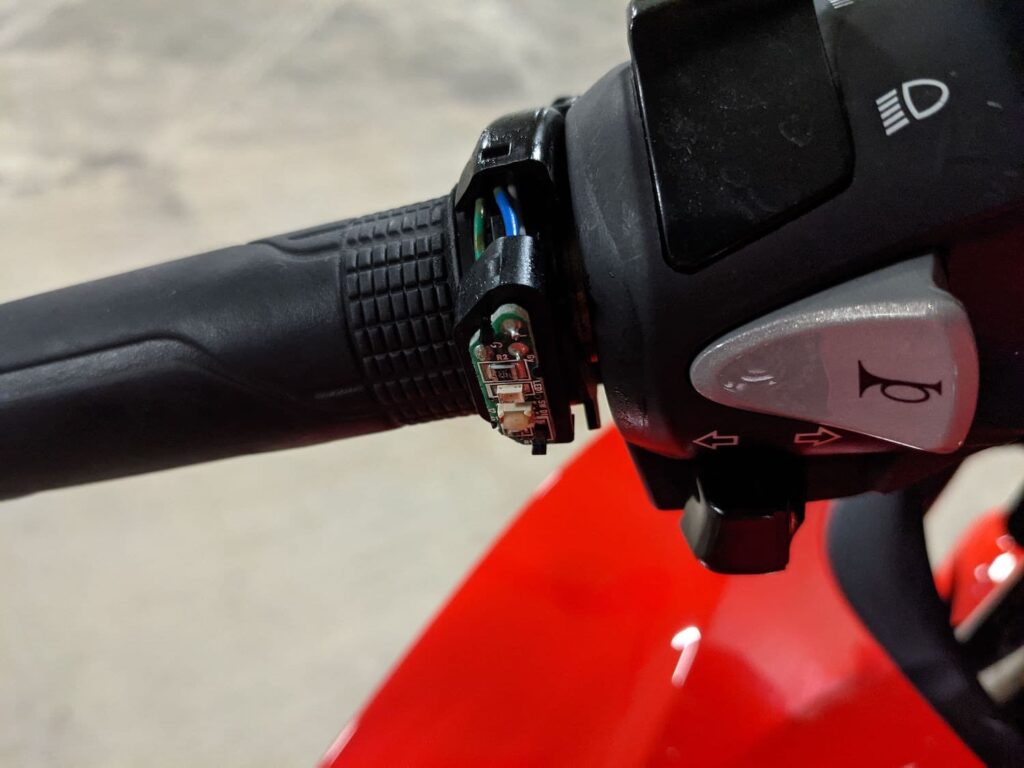
In the time I owned the VFR800, all I did was basic maintenance (cleaning it, lubing it, and maintaining the chain). I also had to replace a heated grip ($150, plus $100 labour because I didn’t have time to take the fairings off to plug in the cable) whose switch fell off while I was riding it, mysteriously.
Why did I sell the VFR800?
I thought I’d keep the VFR800 for a long time. It does so much well. But to be honest, it never really lit my fire.
The engine was fun for a commuter, but ultimately it lacked the bark I got from Ducati motorcycles, or from other high-end sport motorcycles.
One day, I went past a dealer and decided to sit on a few bikes. I thought I might go back to a BMW S 1000 R, or switch to another upright standard like the Honda CB1000R.
But then I made the mistake of sitting on a Suzuki GSX1300R Hayabusa. Or just “Hayabusa”, I have no idea why I said all that other stuff. Then I made the further mistake of riding it for about 20 minutes, including revving it while in a tunnel. The sound. Oh, that sound!
I rode home on my VFR800 and thought… This is so boring. Even revving it up in the tunnel, I could barely hear it.
I traded in my VFR800 two days later.
There’s a lot I’ll miss about the VFR800 8th gen. My Hayabusa doesn’t have traction control, heated grips, or a terribly comfortable riding position. But the one thing it has in plenty is an engine that feels like it’ll completely destroy me.
No, I’ll never get the most out of my ‘Busa — but nor would I have from the VFR. A hundred horsepower is plenty, and two hundred is just too much. I could launch and corner the VFR better, and felt more comfortable lane-splitting on it than on the ‘Busa.
But one doesn’t always make rational choices, especially when it comes to motorcycles. I traded it in for something different for exactly the same reason I tried the VFR — if it makes your heart flutter, then give it a try.

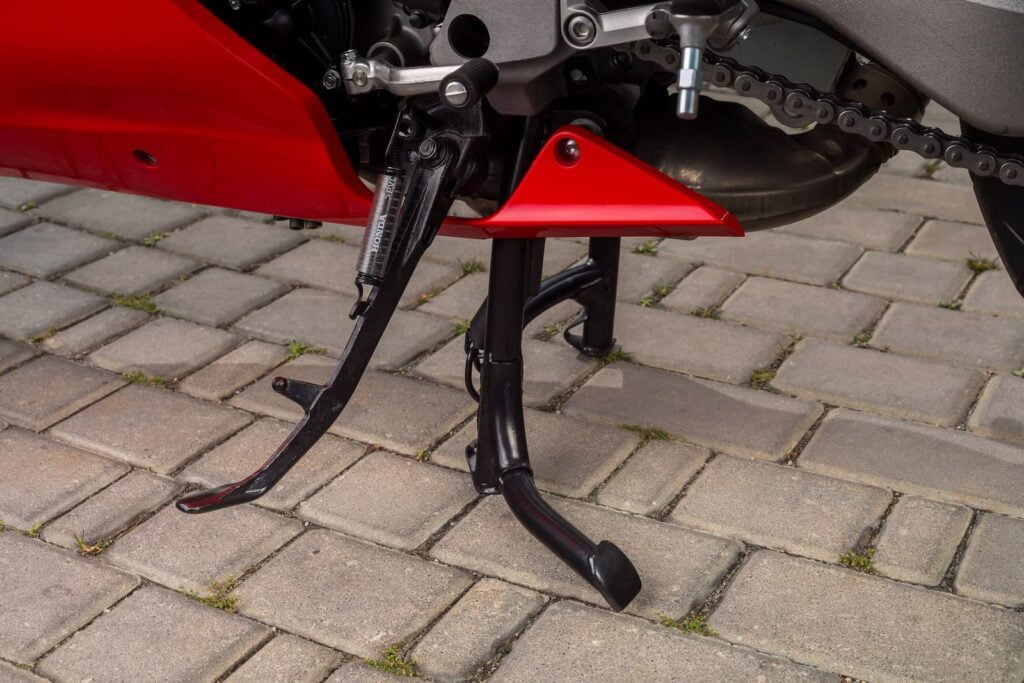
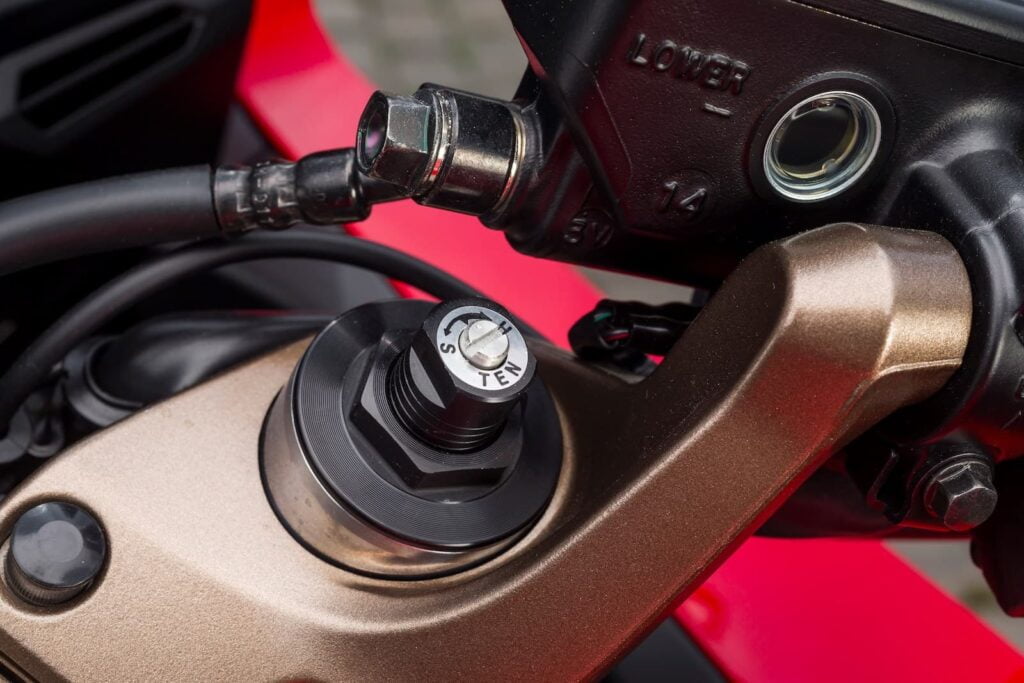
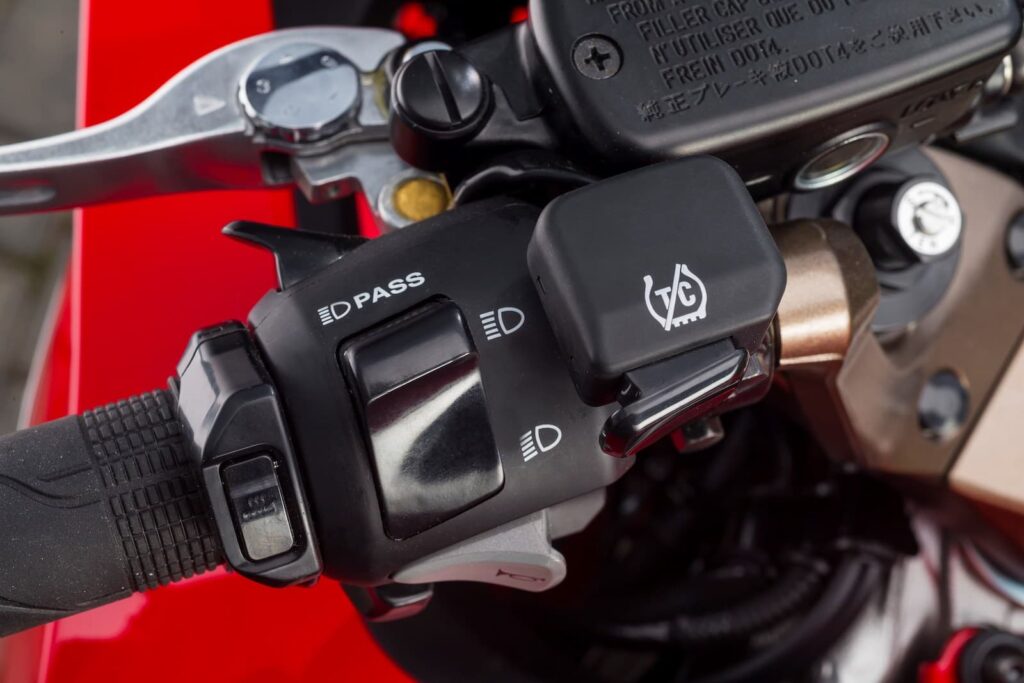
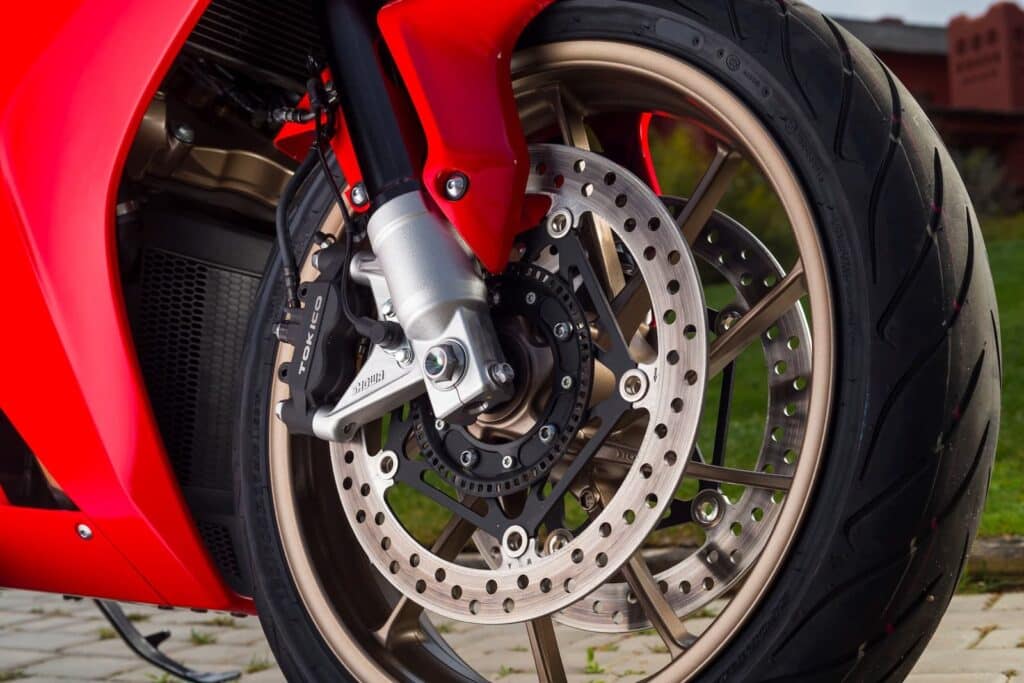
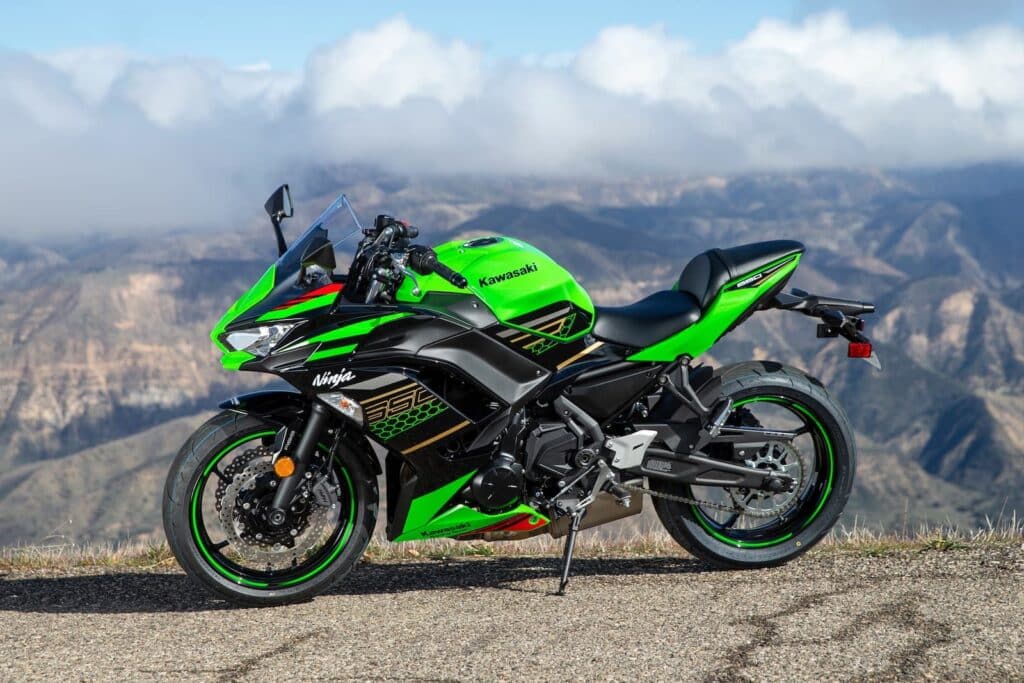
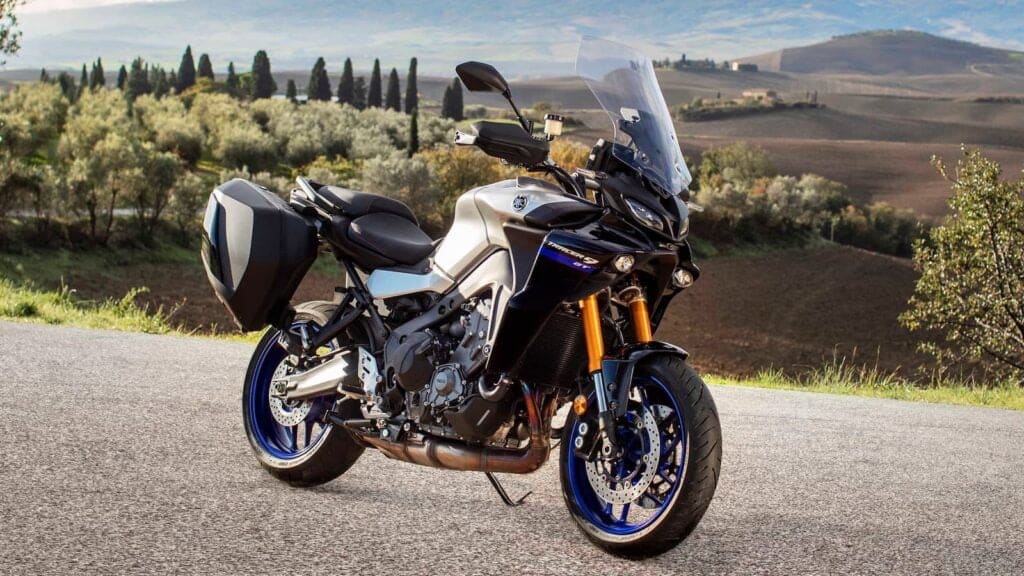
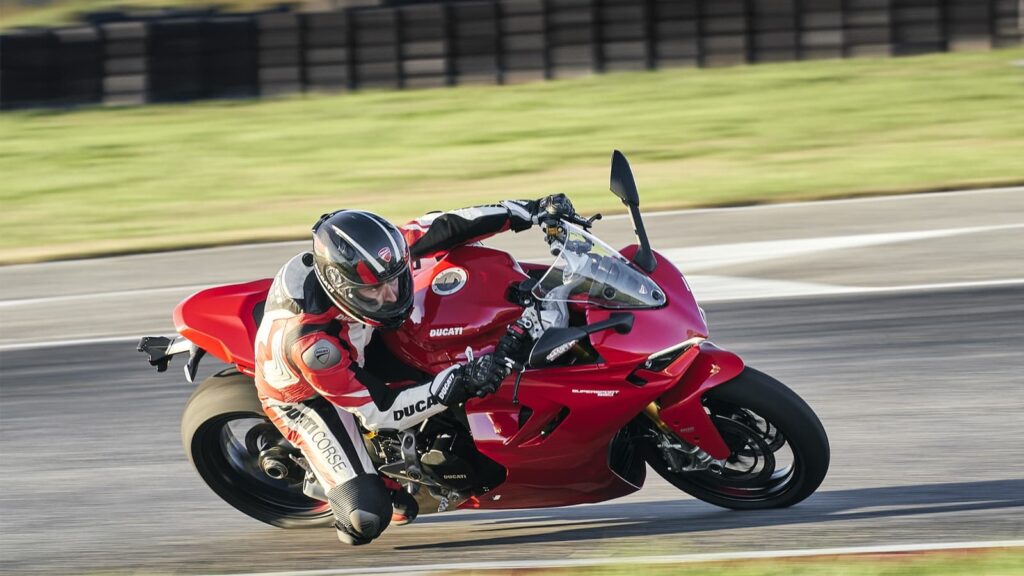
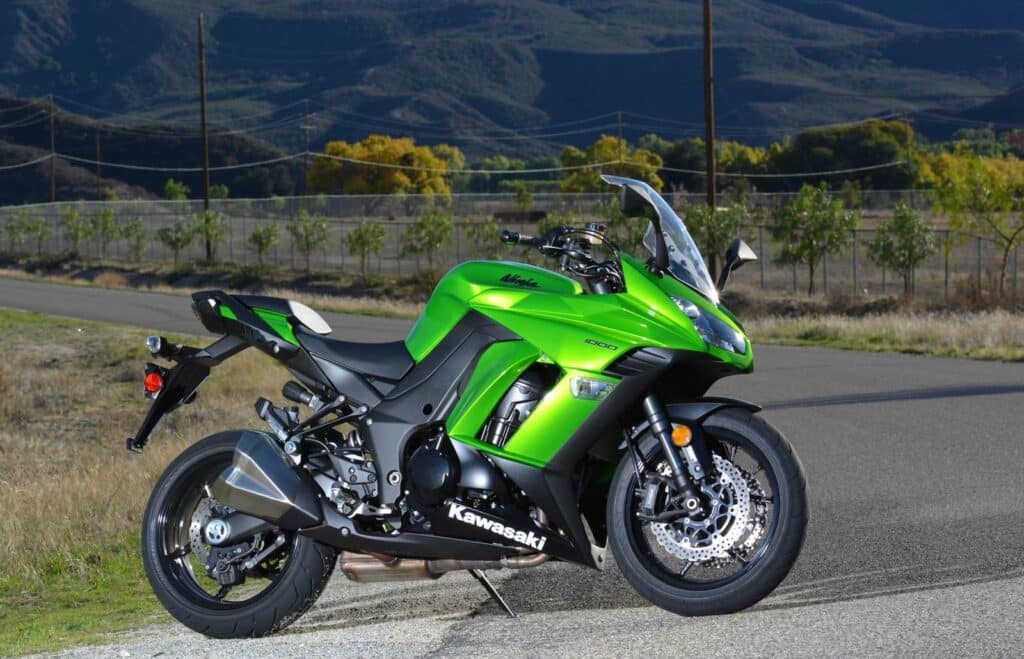
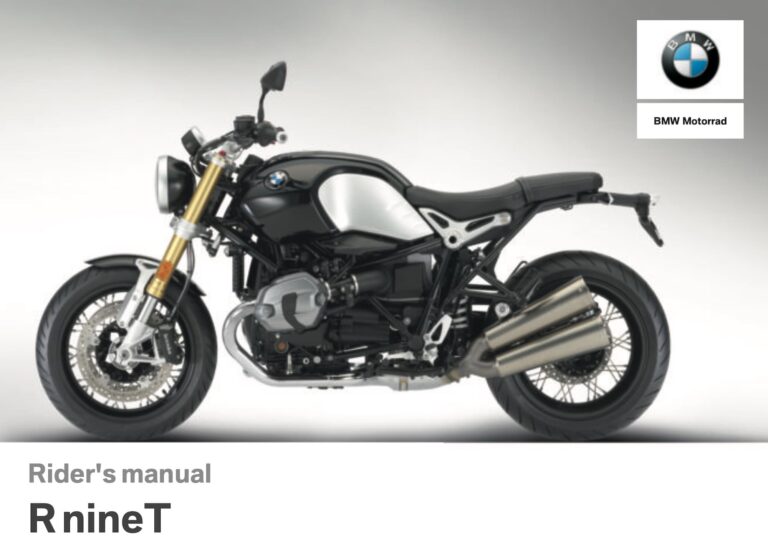
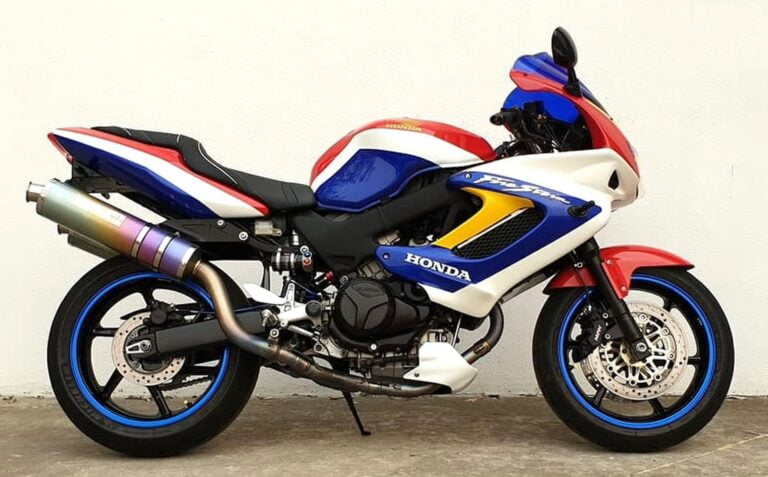
![Buying a Honda CBR600F, CBR650F and CBR650R [Updated for 2024] 17 Buying a Honda CBR600F, CBR650F and CBR650R [Updated for 2024]](https://motofomo.com/wp-content/uploads/2021/01/CBR600f4i-red-1-768x441.jpg)
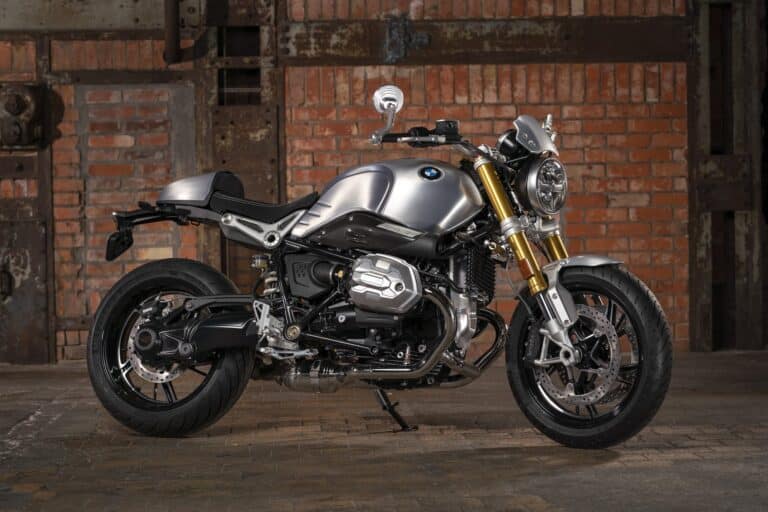

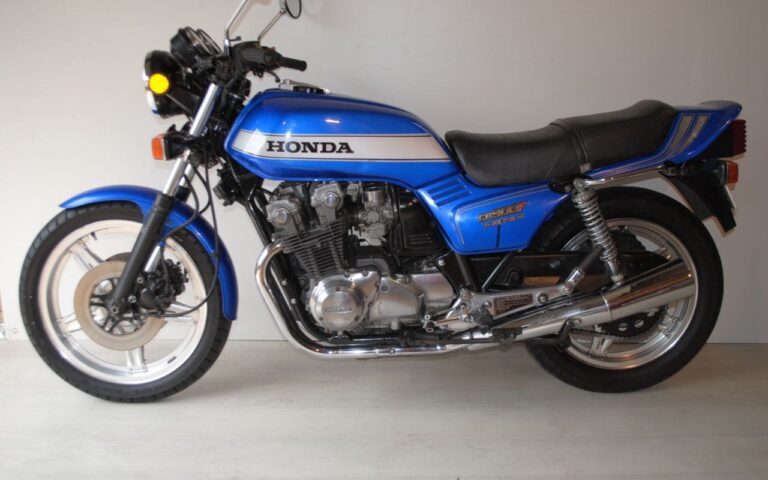
Hi Dana,
Hope you’re doing well.
Great do-it-all motorcycle this VFR, lovely riding position, and double-sided engine character.
Another great contender for fun commuting: the Z900 family, especially the RS (Café or not). Lighter, torquier, more powerful, cheaper. No luggage or heated grips though.
Talking about Kawasakis: the engine from the 1000 SX comes from the ZX-9R.
Cheers
Chakib
Hi Chakib, thanks. Those are truly great bikes. The Z900RS is a bike that makes me look at it. At first I loved the green, but I think the other colours seduce me more.
There is nothing more satisfying than passing Busa riders on mountain/canyon switchbacks in the rain on my 2007 VFR800. I enjoyed your write up. As a multiple VFR owner I think it was fair. I tell everyone the VFR is the bike that does everything well but nothing great. Too bad they don’t make them anymore, because my Microns make that V4 sound fantastic. One thing that often goes unwritten is the total lack of vibration transferred to the rider. No buzz in the grips or the foot pegs at all. This really reduces fatigue. Perhaps the others have caught up? I don’t know. Been on the 07 for over a decade now… Also the valve maintenance? Nonsense. I did my first check 70k miles on my 02. Valves were all within factory tolerance. Over 100k on the 07… no valve check. She purrs like a kitten.
That’s true. Not noticing vibration should be the standard!
You’d have passed me on my ‘Busa for sure. I’m glad I’d have made your day!
Stumbled across this and found it a good read. I owned a 95 VFR and sold it before I ever really rode it hard. Had a lot of bikes in between that bike and a 2014 Interceptor I just purchased. The bikes in between were mostly sport bikes, but there were two Triumph Sprint ST’s in there – they had professionally tuned suspensions so they handled like sport bikes. I wanted to love the VFR – the looks, the legend, the sound (I put a pipe on it and it’s glorious) – but frankly I’m struggling with it. It’s ponderously heavy to me, and I don’t get much upside because I’m not riding longer distances these days. I like the riding position to an extent, but I’d actually like a little MORE weight on the front. The pegs are higher than I thought they would be – I can make them work but was surprised at their height. I find the VTEC problematic – it seemed great on the test ride but now that I’m riding the bike harder with more confidence, I find myself bouncing around in the gearbox trying to find the right gear/RPM. It’s worse in the corners, and if I’m right at the VTEC transition point (6700 RPM) it can catch me off guard a little. I don’t care what anyone says – I can feel it. I’m beginning to fall into the camp of VTEC being a solution to a problem that didn’t really exist. It’s a big, beautiful, mostly-comfortable bike with a weird power band and strange (to me at least..) gearing. I’ll likely be trying on a Ducati Supersport S next Spring. Lighter, more a sport focus, still pretty comfy, and more than enough predictable power.
I have a seventh gen 2010 vfr 1200.
I got into a race with a vfr800 and ate its lunch. 170 hp against the vfr800’s 105 hp. It wasn’t even fair.
I was 15 carlengths ahead of that poor dude when I let off. I also have the dct transmission. The seventh gen was a leap ahead. I’ll never trade down.
Agree with most of writers comments but the 8th generation VFR800 tends to be damned by faint praise. The motor is beautiful and it has a lovely pulse at the lower rpm’s and the V-4 roar when you go through the Vtec transition. I use mine for “despatch” riding around metro. We’ve lot’s of 80km to 90km speed limits on the main distribution roads and the VFR800 is a real sweetie tootling about at those restricted speeds. It has a 21 litre fuel tank and 350km range. The bike is enjoyable and satisfying to ride inside the speed limits and that is surely an excellent quality?
Yes, one thing I did love about the VFR800 was being able to actually rev it out in a couple of gears (well, one gear legally, second gear on remote roads when it was just me and the kangaroos). It’s definitely an excellent quality, and one that I value and miss, and one that many others would appreciate. Thanks for highlighting it.
I have the same bike and like you, the cover for the heated handgrip switch fell off while I was riding. Likewise, I got a quote from the Honda dealer for a new left handgrip of $150 but they couldn’t tell me whether the replacement grip comes with the switch as part of the component. Did your replacement grip come with the compete switch assembly attached?
Yeah, it all came together, somewhat annoyingly. Wow, I was wondering if I should put a guide for that tiny bit of work, and it seems I should.
I actually cut / blistered my hand getting the new grip on. I had done that on a few bikes, but this one was the toughest. Keep a swear jar handy.
I’m picking up a used 2014 VFR800 8th Gen the week after next (if all goes to plan), so your eloquent and considered review popped up in my Google Search at just the right time.
In the past I have most recently owned a Ducati Monster 696, low kms 1997 Ducati 750SS and Triumph Scrambler 900. Out of those three the 750SS was a dream bike – egg yolk yellow with retro Ducati decals, a Staintune two into one chrome pipe, braided hydraulics, it pulled like a turbo charged coal truck and cornered like it was on rails.
That said, it was the most unreliable bike I’ve ever owned. It got to the point where every time I threw a leg over I didn’t know if I’d be going for a ride. The experience kind of burnt me with regard to Ducatis. The availability of parts, maintenance costs and limited specialist Ducati mechanics I trusted, all served to make repairs tiresome and expensive.
I sold my last bike (the Triumph) two years ago – that’s right, I haven’t ridden for two years. It looked and sounded the part but I didn’t like the tyre profile in high speed corners, and at times it felt cumbersome – particularly in heavy slow moving city traffic.
I should be starting a new job soon and wanted a commuter that looks good, is reliable and still fun to take out on the weekend. I also wanted something with a higher seating position for a pillion rider. The Missus occasionally likes to jump on the back and doesn’t like it if she can’t see over my shoulders. My commute will be a 90km return trip across Sydney (three days a week), but no real freeway or high speed roads. There will be a few multi lane 70-80 kms sections but mainly 60-70kms in heavy traffic.
Being a fan of Italian and British bikes I also considered a Triumph Thruxton 900 but it seems a little bare for a commute, and I don’t like the aesthetic of fitting side panniers or saddle bags, as it spoils the faux Cafe Racer look and feel. I also like a bike with twin discs up front. I did briefly think about a Ducati Super Sport and found one with 27,000 kms on the clock, that was in my price range. I’ll be riding roughly 15,000 kms per year and the thought of owning a Ducati that in two years will have covered over 50,000 kms does not bode well based on past experience.
The VFR ticks a lot of boxes based on what I’ve read and the one I’m buying comes with a top box for a change of clothes and other work related paraphernalia. For me, I don’t believe the VFR is going to compare to a Ducati in terms of gut wrenching performance or a retro Triumph for it’s street cool vibe, but I believe it will serve its purpose as a reliable and cost effective commuter. It also looks the part in its own right and has enough grunt to be fun on the weekends. I am a little worried about availability of spares and resale given they don’t make them any more, but I’ll let you know how I go.
Glad to have helped with your decision-making process! Which gen did you get?
I agree, 90 km daily in traffic on a Ducati sounds unpleasant. I tended to sell my Ducatis just after I fixed everything because they were always ticking time bombs. But then — I’ve never had one that was close to new (closest was 7 years old and 45000 kms).
And I think these bikes are old enough and have a solid enough fan base that you won’t have too much trouble selling it if it’s not for you, adjusting for kilometres etc.
I don’t ‘get’ the later iterations of the VFR. They kind of made sense up until the VTEC models, but after that they just felt like they were being built for people who had never ridden anything more modern (dynamically) than the previous model VFR.
My dad had a 97 RC36-2 that I got to ride quite a bit. It was beautiful, well made and sounded incredible with its staintune exhaust. It also weighed 240ish kilos and only put out a little over 100bhp and 54 lb ft. I rode it for a week when I was visiting one time, then got home and nearly threw my gsxr750 into a bush by mistake, the handling was so much lighter. I know, I know – different class of bike, but it’s crazy that a ‘sporty’ 750 can weigh so much and have such little poke.
Since then VFRs just never appealed to me. I don’t understand their purpose beyond ‘premium inoffensive bland bike’.
Any VFR fans are more than welcome to rip into me though, I just bought a Blandit 1250 to replace a s1000r. But hey, with a couple of simple mods I got 125hp and 90 lb ft, 80 of which are delivered from 2k rpm up. I’m in ‘budget inoffensive dull bike’ heaven. Plus it weighs almost as little as everyone’s favourite sporty Honda 800. And the heated grips won’t fail because it doesn’t have any.
By the way Dana, did you ever have to consider replacing the grips on your s1000r? Mine wore out by the time I got to about 30k kms and I discovered that you can’t buy the grips, you have to buy the grips, throttle tube AND controls as a unit. You can imagine how expensive that is!
PS – gimme a go on your Busa
Hi Oli,
The earlier VFRs at least had a bit of visceral engine feel and sound. I think of them as commuters or tourers with character, rather than bikes that are built as all-out fun machines. The thing is… if a bike isn’t an all-out fun machine, I at some point lose interest. Could be a bangin’ cruiser, a ripping sportbike, or a vibey naked twin. But at some point along the fun-efficiency continuum, I think… maybe I should just take the metro, and not have to change all these clothes and deal with the weather and traffic.
So yeah, for pure fun, I can imagine you would much, much rather be on your GSX-R750, pretty much the zenith of fun.
Then there’s the Bandit. I have to admit, I eye the GSX1250FA sometimes as a bike so effective but so affordable they didn’t even invest in giving it a good name. Torque everywhere, as you said. It’s the antithesis of people claiming inline fours don’t have low-end torque. And they’re cheap as chips these days.
I never had to replace the grips on the S1000R. But that story sounds familiar… you can’t buy bits separately these days. 🙁
You can have a go on the ‘Busa if you’re ever in the area (and I am), sure! Ludicrous or garishly styled bikes like the Busa, M109R, Ducati 999, Rune etc. are polarising, but it’s cool to find out on which side of the love/hate relationship you’re on as the love side is a fun place to be.
To bad you didn’t install a full Delkevic exhaust system, sounds like a MotoGP bike, and that tunnel would have been really fun.
I flew to Las Vegas to buy my 2015 DLX, my first ride on the bike was 521 miles and it was so quiet I couldn’t hear it. When the VTEC kicked in it was lame at best. The pegs were squishy, but it handled great, it was very complimentary to the rider, and it maintained its temperature even though it was 115 F for the first 158 miles of the ride.
I was not impressed to say the least. I set out to change the character of the VFR. The handling was solid , and it was well balanced. The brakes were very good also. It looked more Italian in design than Japanese, and that single sided swing arm with the bronze wheel was definitely beautiful, if only you could see it.
So after numerous upgrades, DynoJet Auto Tune, Sprint air filter, air box modifications, PAIR system removal, full Delkevic exhaust, Sato rear sets, GIVI top box, and removal of all that black shielding around the exhaust pipes and all of a sudden it has this exotic look with a beautiful MotoGP V4 sound (very Aprilia Tuono like).
Now that very quiet VFR is this yowling beautiful red honey of a bike. That deep sound at idle, that unique howl at revs, and that beautiful pipe work that exposes that exotic single sided swing arm. So much emotion now!
https://www.instagram.com/p/CjN0MPKryac/?igshid=YmMyMTA2M2Y=
Wow, that sounds incredible! I must admit I didn’t think that kind of feel was within reach of the Gen 8. I didn’t come across a bike like yours. I’m still open to VFRs, though my eye is on the Gen 5.
I appreciated your article. As a 3rd time VFR owner, I am of course biased but I also have never owned nor ridden any VFR past my present 4th gen.
I had a 95 Interceptor and a 94 VFR. In between a couple Ninjas and in my past were (ancient days) my two stroke pocket rocket RD350 and a Yamaha Seca.
You mentioned the throaty sounds of past generations, that would be the magic of a gear driven cam (last year I beleive was 2001).
Nothing so sweet as that mid range to red line sound and the expectations of knowing you won’t be vibrating to death.
My present 97 still runs like a predictable fiery but controllable scoot looking for more sweepers.
Presently I am actually looking at a Indian Scout to ease into my middle 50 years, but I plan on keeping my 97 for as long as my aching back and crakling knees allow me.
Keep having fun and being safe.
Regards,
VFR’r for life
Hi Dana,
I’m looking at an affordable bike, not to commute on, but to ride around Australia. I’m 68 and retired. For fun, I have a 2020 Triumph Speed Triple. It has had the compression damping revalved at both ends to avoid losing my fillings, and a Daytona 955i exhaust because it’s QUIET while cruising. Without those changes I’d have had to sell the bike, although I love its other attributes. Oh, and I have a BMW R1200S I may have to sell to make room in the garage for another bike. My own sweet spot for power is more like 120HP, where the BMW is, not for its power band above 6500rpm, but for its torque. The BMW has both lights on, but only in high beam. At least the low beam is pretty central in the front of the bike. The Triumph has both on too. I once read that the single headlight is a European rule, so bikes are not mistaken for more distant cars. Maybe that’s right. The 955i Speed Triple of course had 2 lights, one hi, one lo, but both had a 60/55W H4 globe. You needed to add one relay in a vacant socket to have hi/lo in both, much better.
For the big trip I wanted shaft drive, luggage capacity, long fuel range and wind protection. I was interested in the FJR1200, after rejecting the ST1300 for its excessive weight, the BMW R1200 GS and RT for various reasons, and the Sprint GT because I already have a Triumph. I like that the FJR runs on 91 octane fuel, not sure how most riders fare in outback Australia on bikes that need premium.
Still concerned about weight, and not needing huge power, or room to carry a pillion, I found myself here looking at a more compact, less powerful bike. I can buy a decent newer VFR800 with factory panniers for a bit less than a good FJR too, and add a top box. And right now there are no FJRs for sale in Victoria.
Compromising on chain drive isn’t too bad. I can install a Cameleon electronic chain oiler, as I do on all my chain driven bikes. With an added brake fluid reservoir for 35ml extra oil, I have a range of about 8000km between top ups with chainsaw oil. Wind protection is less on the VFR, and the fuel range limited, but 21 litres is much better than the 15 in my Triumph. A VFR promises to be smooth, quiet and reliable, not too large, heavy or powerful, just what I need on a very long trip by myself. I may try to find the handlebar risers you mentioned.
That said, my Speed Triple is just fine for a 500km day, about as far as I want to go on a relaxed trip.
Do you know if the VFR runs OK on regular unleaded?
IanB
Hi Ian, excellent question. Aside from not wanting to run out of petrol between stations, it’s a good call to not throw away money in the age of rising pump prices! All VFR800 generations (I just checked the manuals for all three generations) are designed to run RON 91 (Australia/Europe octane system) / 87 pump Octane (US grading system), a.k.a. regular unleaded. So there you go, your trip just got about 25% cheaper.
If you decide to sell the R 1200 S, let me know, as people periodically email me looking for them (I have one guy right now waiting). I’ll send you an email, because I also want to talk to you about bikes to ride in Australia as it sounds like we’re going through the same thought processes.
Hi Dana,
Thanks for checking. I should have downloaded the owners manuals to find out for myself. At least the answer is out there for others. Good news, the FJR1300 and VFR800 both run on 91. For me, it’s not so much the petrol cost, but the patchy availability of premium unleaded. So often, even in Victoria and NSW, you have the choice of 91 or diesel. Or 91 and 98 when you want 95. IMO Australia should switch to 95 only pending the gradual takeover of electric vehicles. Just about any vehicle runs on 95, and the saving on refining cost and logistics should keep the cost down.
Still thinking about selling the R1200S.
My wife says I’d regret selling it, as I did with a pristine Daytona 955i I sold 3 years ago. She’s probably right.
IanB
I love my VFR, but I ride a 5th gen. Without the gear driven cams, I don’t think the VFRs make much sense. Too many other choices out there. And, although the VTEC bikes have proven reliable, I think the chain-driven VTEC is still less reliable than the gear-driven cams. I have a friend who rides a 6th gen with the VTEC, and he loves it, but it’s not for me.
I do wish the VFR800 had more power, and was lighter, but I find I can keep up pretty well with most bikes/riders.
Great write up, bought my 2014 dlx new in 2017, gotta say the $7700 price point was an influence. You could buy them new at that price (or less) until around 2020.
My only complaints about the bike are 100hp (125 would be perfect) and the +530 lbs wet weight (50 lbs lighter would be way better). I’ve added a few mods (DAM slip on, PC6 + custom map, KN air filter, bar riser blocks) and I’m getting pretty close to my ideal. Currently working on improving the suspension. I do not notice any significant VTEC surge @6700 rpm, just a change in tone and more power available.
The bike seems to fill an odd niche, I’d describe it as “the fat old guys desire for comfortable sport-like riding on a race-inspired motor” type motorcycle. I’ll be sticking with it for a while😁.